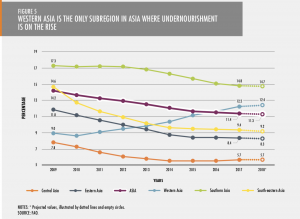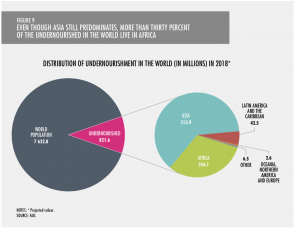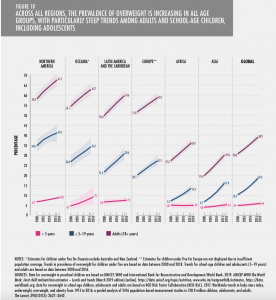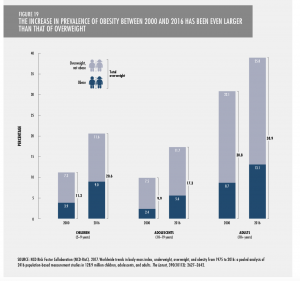Bloomberg's Hallie Gu reported that "China’s grain supply won’t be affected by a loss of US feed grain and oilseed imports, thanks to abundantly available substitutes on the global market…
FAO Report on World Hunger: More Than 820 Million People Are Hungry
Earlier this week, the Food and Agriculture Organization of the United Nations (FAO) released a report titled, “The State of Food Security and Nutrition in the World 2019.” Today’s update includes highlights from the FAO report.
The report stated that, “Additional evidence available this year confirms that the global level of the [prevalence of undernourishment (PoU)] has remained virtually unchanged at a level slightly below 11 percent, while the total number of undernourished (NoU) has been slowly increasing for several years in a row.
This means that today, a little over 820 million people suffer from hunger, corresponding to about one in every nine people in the world.

“As highlighted in past editions of this report, these trends are mostly driven by a combination of factors, including conflicts and extreme weather events, currently affecting a number of countries in Africa,” the report said; adding that, “The number of undernourished people in drought-sensitive countries has increased by 45.6 percent since 2012.”

The FAO report also explained that, “In Asia, the PoU has been steadily decreasing in most regions, reaching 11.4 percent in 2017. The exception is Western Asia, where the PoU has increased since 2010 to reach more than 12 percent of the population. This level in the region is second only to Southern Asia, which, despite great progress in the last five years, is still the subregion where undernourishment is highest, at almost 15 percent.”

More broadly, this week’s report stated that, “Analysis of the distribution of the undernourished population across regions in the world shows that the majority (more than 500 million) live in Asia. The number has been increasing steadily in Africa, where it reached almost 260 million people in 2018, with more than 90 percent living in sub-Saharan Africa.”

The report added that, “The distribution of food-insecure people in the world presented in Figure 11 [below] shows that, from a total of 2 billion suffering from food insecurity, 1.04 billion (52 percent) are in Asia; 676 million (34 percent) are in Africa; and 188 million (9 percent) are in Latin America.

“The figure also illustrates the difference across regions in the distribution of the population by food-insecurity severity level. For example, in addition to being the region with the highest overall prevalence of food insecurity, Africa is also the region where severe levels represent the largest share of the total. In Latin America, and even more in Northern America and Europe, the proportion of food insecurity experienced at severe levels is much smaller.”
In addition to hunger, the FAO report pointed out that, “The prevalence of overweight is increasing in all age groups, with particularly steep trends among school-age children and adults. Among school-age children, the prevalence has nearly doubled since 2000.
Over half of adults and over a quarter of school-age children in Northern America, Oceania, Latin America and the Caribbean, and Europe were overweight in 2016.
“No region is exempt from this overweight crisis. All have experienced an increase of roughly ten percentage points in the prevalence of overweight among adults since 2000.”

“In addition, the relative rate of increase in the prevalence of obesity between 2000 and 2016 has been even faster than that of overweight: the prevalence of obesity more than doubled among children and adolescents over this time period,” the FAO said.

After additional analysis, the FAO report indicated that, “This year’s report continues to signal the significant challenges that remain in the fight against hunger, food insecurity and malnutrition in all its forms.”
“The latest global economic prospects warn of slowing and stalled economic growth in many countries, including emerging and developing economies. Episodes of financial stress, elevated trade tensions, declining commodity prices, and tightening financial conditions are all contributing to these increasingly grim prospects.”





